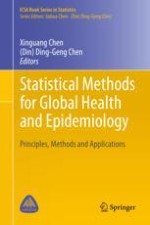2020 | OriginalPaper | Buchkapitel
8. A 4D Indicator System of Count, P Rate, G Rate and PG Rate for Epidemiology and Global Health
verfasst von : Xinguang Chen, Bin Yu, (Din) Ding-Geng Chen
Erschienen in: Statistical Methods for Global Health and Epidemiology
Aktivieren Sie unsere intelligente Suche, um passende Fachinhalte oder Patente zu finden.
Wählen Sie Textabschnitte aus um mit Künstlicher Intelligenz passenden Patente zu finden. powered by
Markieren Sie Textabschnitte, um KI-gestützt weitere passende Inhalte zu finden. powered by
